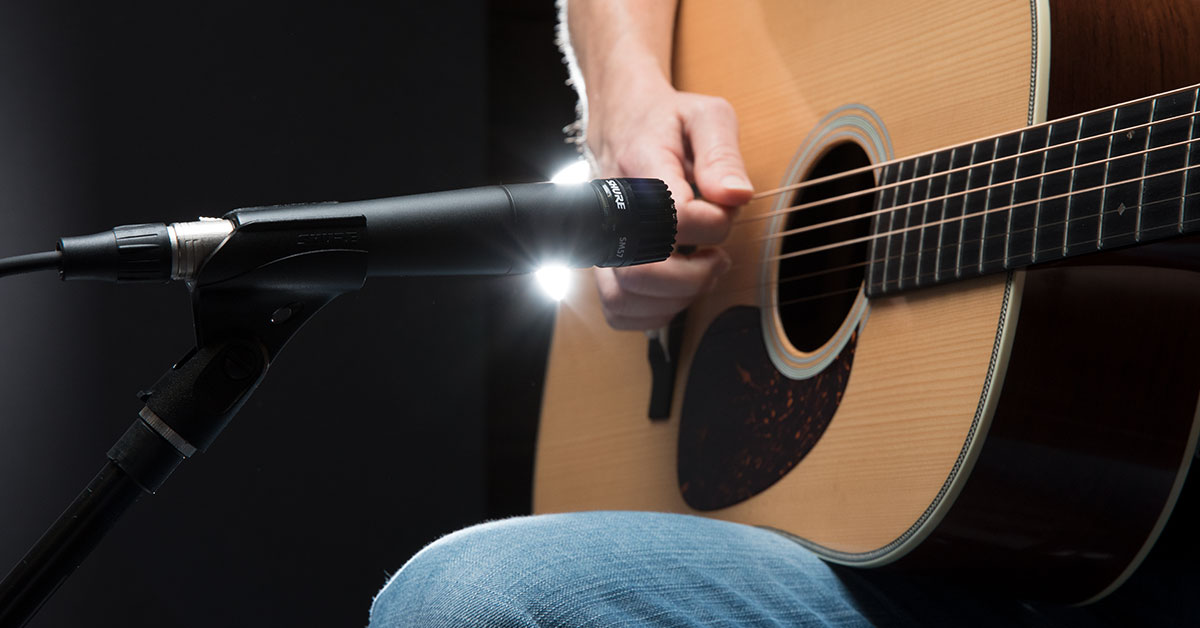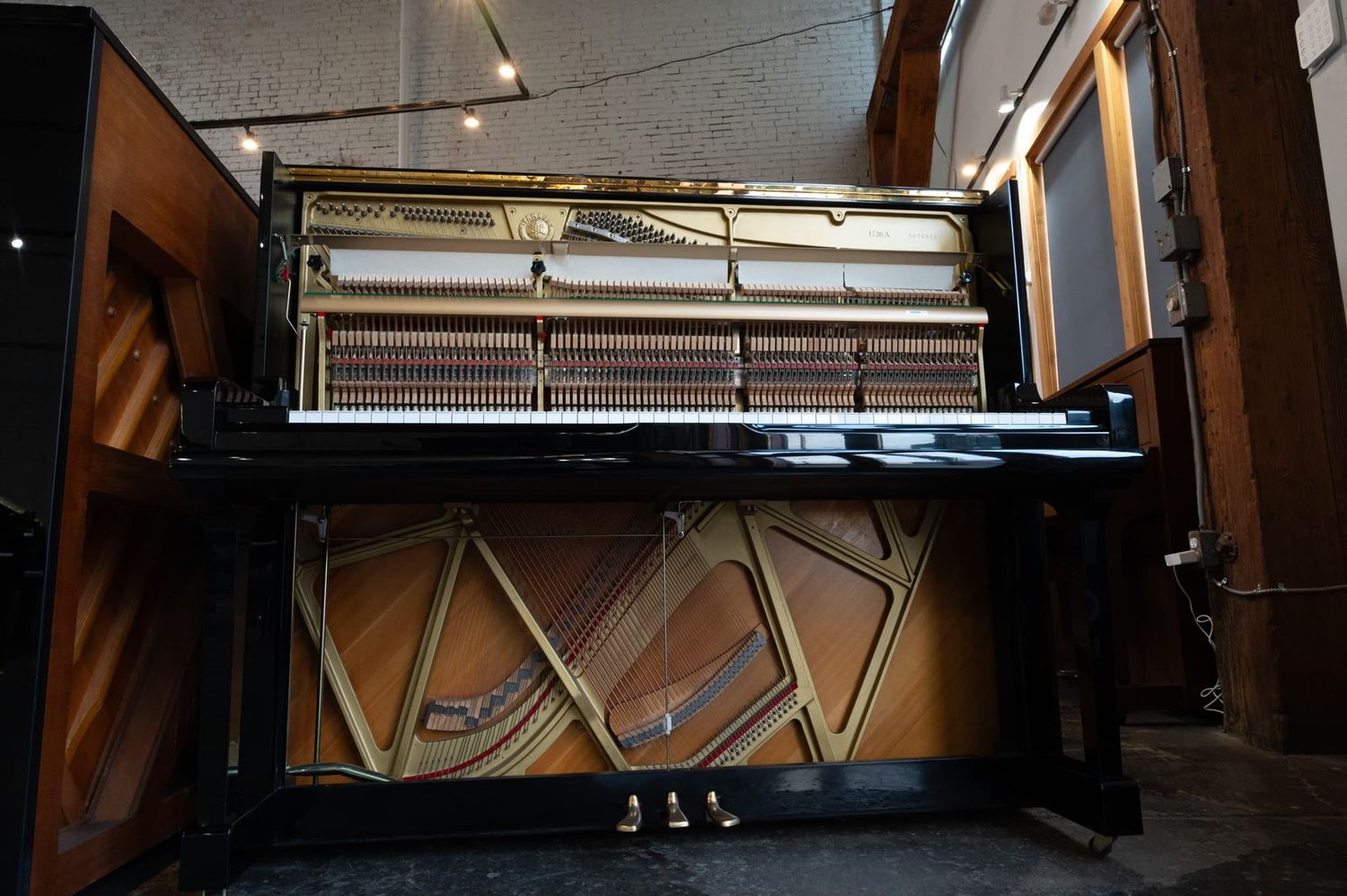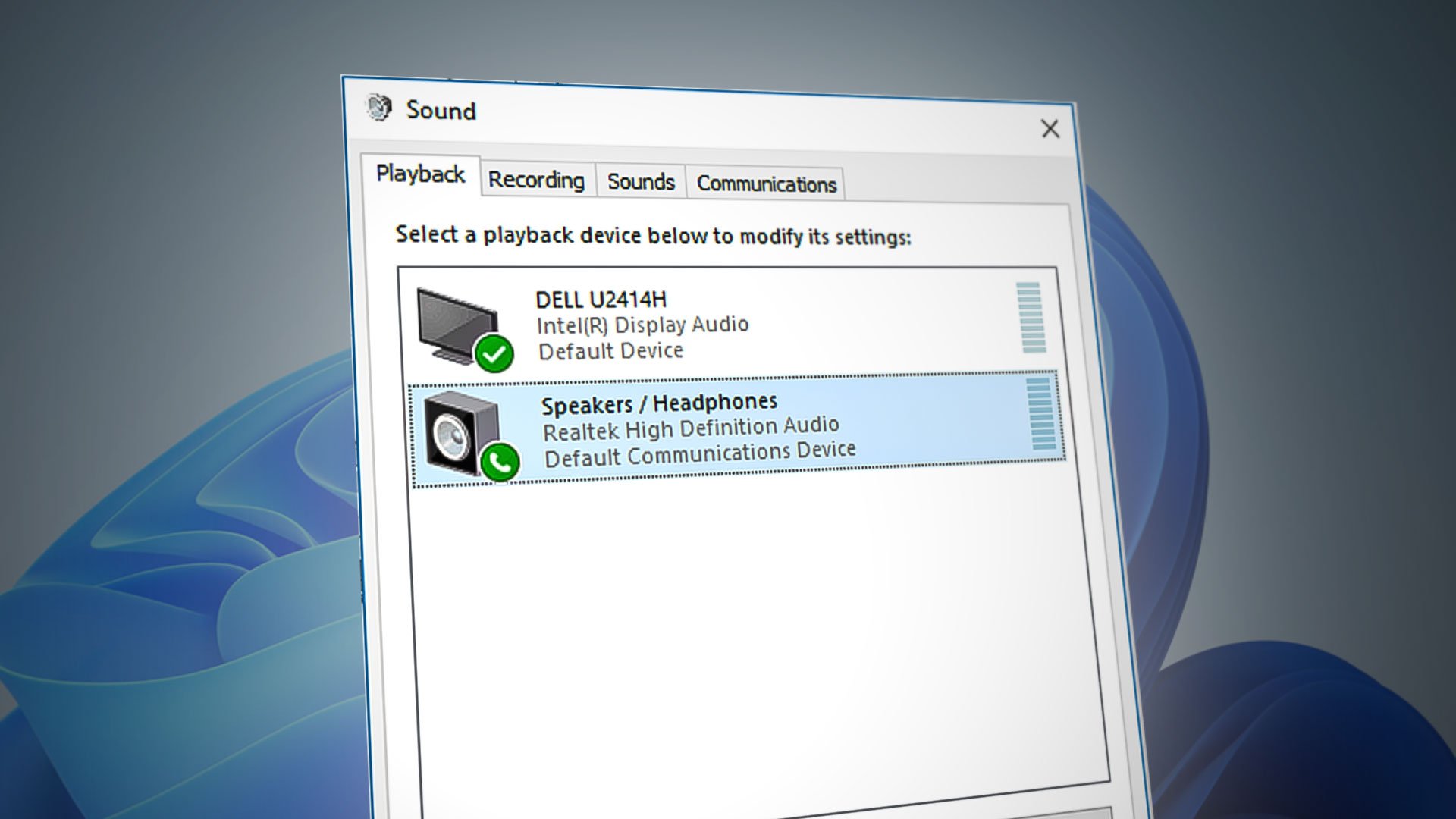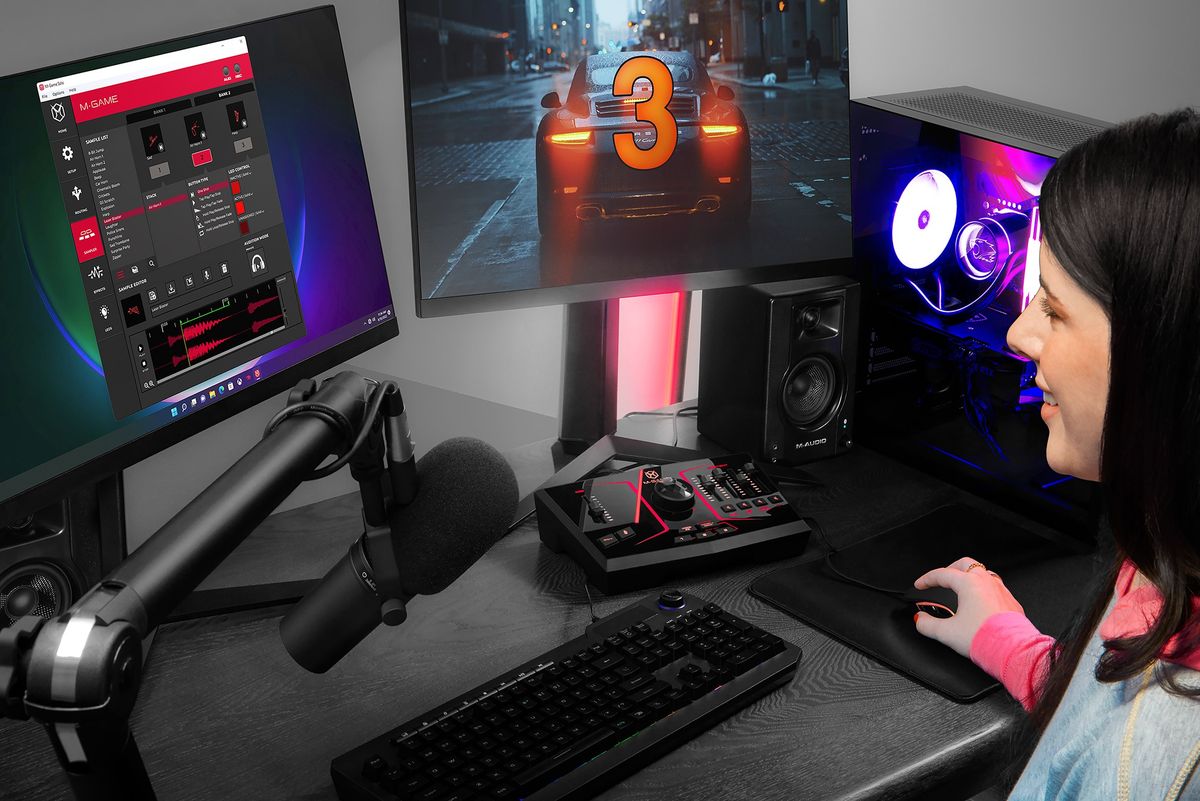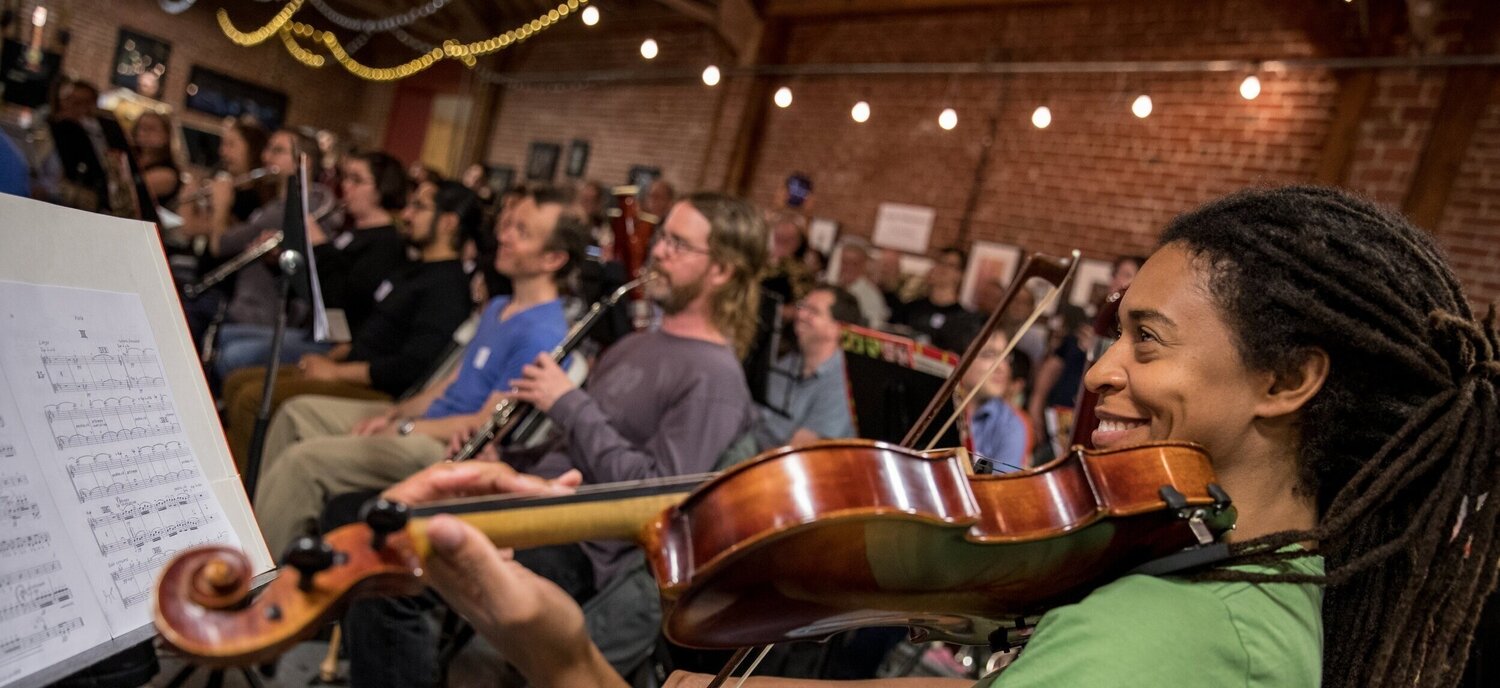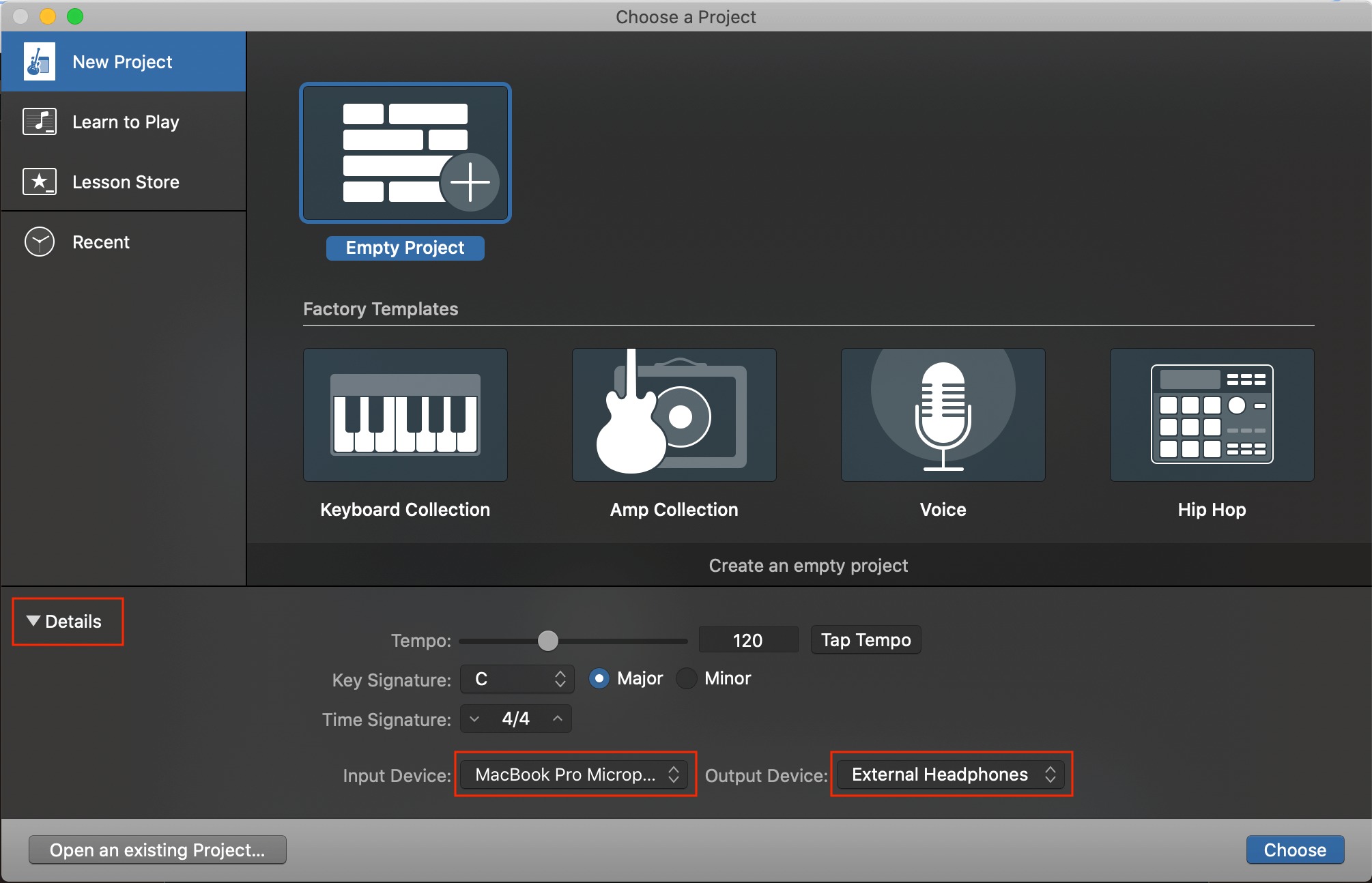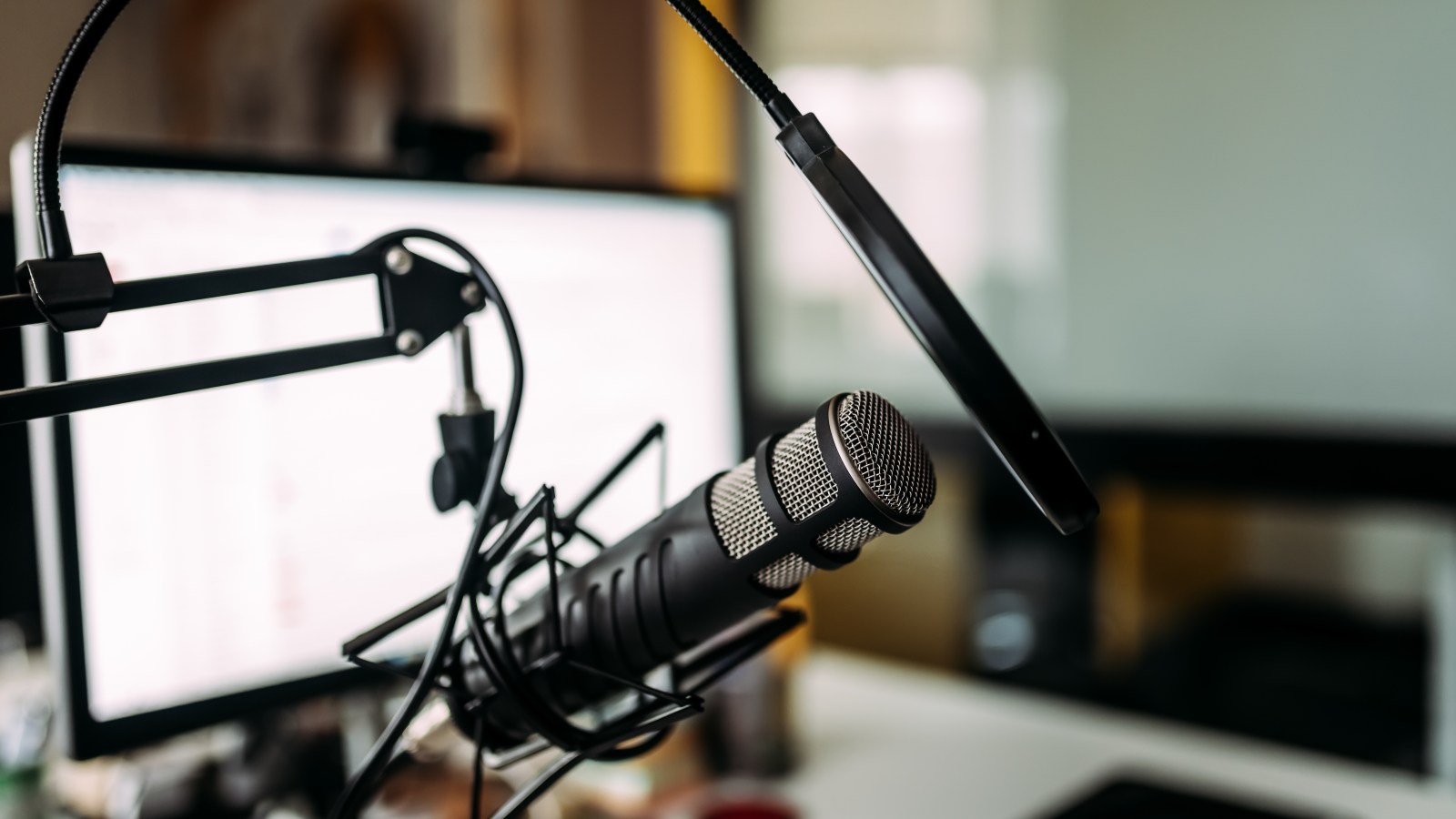Home>Production & Technology>Orchestra>How To Mic An Orchestra
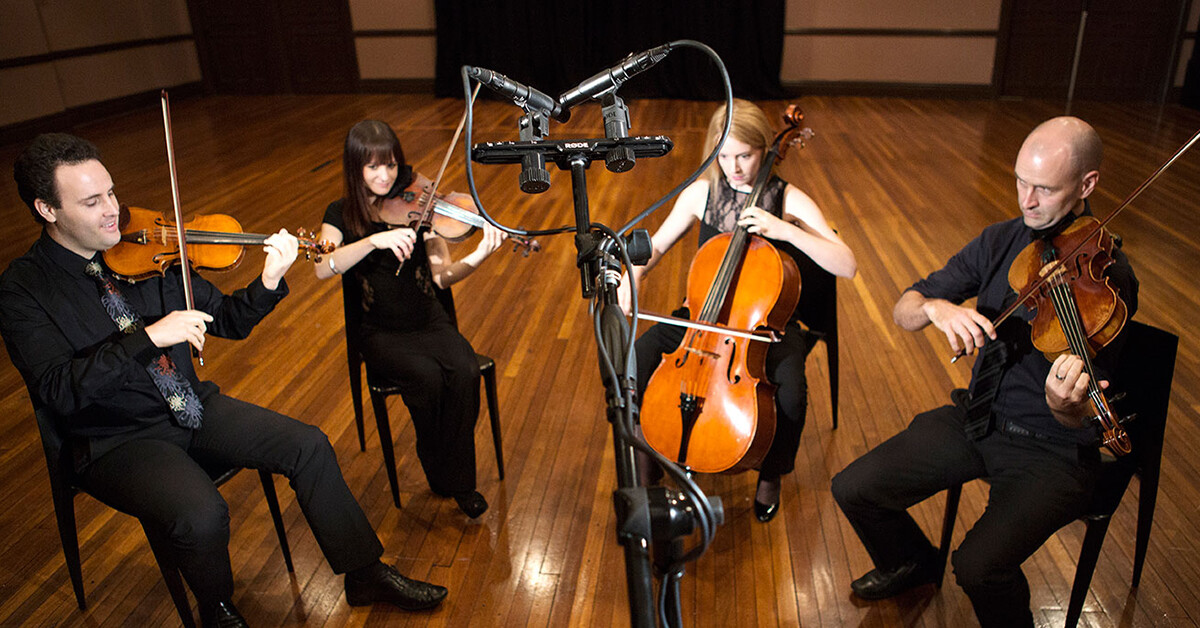

Orchestra
How To Mic An Orchestra
Published: February 25, 2024
Learn how to effectively mic an orchestra for optimal sound quality and balance. Discover the best techniques and equipment for capturing the rich and dynamic sound of an orchestra.
(Many of the links in this article redirect to a specific reviewed product. Your purchase of these products through affiliate links helps to generate commission for AudioLover.com, at no extra cost. Learn more)
Table of Contents
Introduction
When it comes to capturing the grandeur and intricacy of an orchestra, the role of microphones is paramount. The art of miking an orchestra involves a delicate balance of technical expertise and artistic finesse. Each section of the orchestra, from the powerful brass to the delicate strings, requires a unique approach to achieve the best possible sound reproduction. In this comprehensive guide, we will delve into the intricate process of miking an orchestra, exploring the nuances of choosing the right microphones, mastering placement techniques, handling multiple instruments, overcoming acoustic challenges, and implementing effective monitoring and mixing techniques.
Miking an orchestra is a multifaceted endeavor that demands a deep understanding of the instruments, the venue, and the sonic landscape. It involves more than just capturing sound; it requires the ability to encapsulate the emotion and energy that reverberates through the concert hall. Whether it's the thunderous crescendo of a full orchestral tutti or the tender whisper of a solo violin, the microphones must be adept at faithfully reproducing the full spectrum of sonic dynamics.
As we embark on this exploration of miking an orchestra, it's essential to recognize the profound impact that this process has on the overall musical experience. The meticulous attention to detail and the seamless integration of technology into the artistic realm culminate in a harmonious blend of tradition and innovation. By harnessing the power of precision miking, we can elevate the orchestral performance to new heights, allowing the audience to immerse themselves in the rich tapestry of sound.
Throughout this guide, we will unravel the complexities of miking an orchestra, offering insights and techniques that cater to both seasoned audio engineers and aspiring enthusiasts. From the initial selection of microphones to the final stages of mixing, each step plays a pivotal role in shaping the sonic landscape. Join us as we embark on this illuminating journey into the heart of orchestral miking, where technical prowess converges with artistic vision to create an unforgettable auditory experience.
Choosing the Right Microphones
Selecting the right microphones for miking an orchestra is a critical decision that significantly influences the quality and fidelity of the captured sound. The diverse array of instruments, each with its unique sonic characteristics and tonal complexities, necessitates a thoughtful approach to microphone selection. To embark on this journey, it is imperative to understand the distinct microphone types and their suitability for various orchestral sections.
Dynamic Microphones
Dynamic microphones are renowned for their robust build and ability to handle high sound pressure levels, making them ideal for miking loud and dynamic instruments such as brass and percussion. Their durability and resistance to feedback make them valuable assets in the orchestral setting, where the sheer power of brass instruments and percussion demands a reliable and rugged microphone solution.
Condenser Microphones
Condenser microphones, characterized by their sensitivity and extended frequency response, excel in capturing the nuances of delicate instruments like strings, woodwinds, and choir vocals. Their ability to faithfully reproduce intricate details and subtle tonal variations makes them indispensable for capturing the ethereal timbres and expressive dynamics inherent in these sections of the orchestra.
Ribbon Microphones
Ribbon microphones, revered for their warm and natural sound reproduction, offer a vintage charm that complements the timbral richness of orchestral instruments. Their smooth high-frequency response and nuanced transient capture make them well-suited for accentuating the harmonic intricacies of strings, brass, and woodwinds, adding a touch of vintage allure to the sonic tapestry of the orchestra.
Multi-Pattern Microphones
Multi-pattern microphones, equipped with switchable polar patterns such as cardioid, omnidirectional, and figure-8, provide versatility in capturing a wide range of orchestral configurations. Their adaptability allows for seamless adjustment to accommodate the spatial dynamics of the orchestra, making them indispensable tools for capturing the immersive sonic panorama of a live orchestral performance.
The selection of microphones for miking an orchestra is a nuanced process that demands a keen understanding of the sonic characteristics of each instrument and the intricacies of live sound reinforcement. By leveraging the unique attributes of dynamic, condenser, ribbon, and multi-pattern microphones, audio engineers can orchestrate a symphonic marriage of technology and artistry, ensuring that every sonic nuance is faithfully preserved and magnificently amplified.
Placement Techniques
The art of miking an orchestra extends beyond the selection of microphones; it encompasses the strategic placement of these audio capture devices to achieve optimal sonic fidelity and spatial balance. Each instrument within the orchestra possesses distinct sonic characteristics and projection patterns, necessitating a tailored approach to microphone placement. By strategically situating microphones, audio engineers can effectively capture the full spectrum of tonal nuances and spatial dynamics inherent in a live orchestral performance.
Orchestral Sections
Strings
The placement of microphones for string instruments, including violins, violas, cellos, and double basses, is crucial in capturing their rich harmonics and resonant textures. A common technique involves utilizing a combination of close miking for individual instruments and ambient miking to capture the collective resonance of the string section. Placing microphones at an optimal distance and angle from the strings enables the capture of both the intimate details of each instrument and the cohesive blend of the entire section.
Woodwinds and Brass
Woodwind and brass instruments, renowned for their expressive tonal range and dynamic projection, require strategic microphone placement to faithfully capture their sonic prowess. Close miking techniques, combined with the utilization of directional microphones, facilitate the precise capture of the intricate timbral nuances and powerful projection of these sections. Additionally, the careful positioning of microphones helps mitigate potential phase cancellation and ensures a cohesive sonic representation of the woodwind and brass sections.
Percussion
The diverse array of percussion instruments demands a nuanced approach to microphone placement. Close miking techniques, coupled with the strategic implementation of overhead and ambient microphones, allow for the comprehensive capture of the percussive intricacies and spatial dynamics within the orchestra. By strategically situating microphones to capture the transient attack and reverberant decay of percussion instruments, audio engineers can achieve a balanced and immersive representation of the percussive elements within the orchestral ensemble.
Spatial Considerations
In addition to instrument-specific placement techniques, spatial considerations play a pivotal role in orchestrating a cohesive sonic panorama. The strategic positioning of microphones within the concert hall, including overhead and ambient miking, contributes to the capture of the reverberant characteristics and spatial depth inherent in a live orchestral performance. By leveraging spatial miking techniques, audio engineers can encapsulate the immersive sonic ambiance of the concert hall, enhancing the overall listening experience for the audience.
The Art of Precision
Miking an orchestra is an art form that demands precision, intuition, and a deep understanding of sonic intricacies. By meticulously employing instrument-specific placement techniques and leveraging spatial considerations, audio engineers can orchestrate a symphonic marriage of technology and artistry, ensuring that every sonic nuance is faithfully preserved and magnificently amplified. Through the artful placement of microphones, the orchestra's sonic tapestry is woven into a captivating auditory experience, allowing audiences to immerse themselves in the grandeur of live orchestral music.
Handling Multiple Instruments
When miking an orchestra, one of the most intricate challenges arises from the need to capture the diverse array of instruments that collectively constitute the ensemble. From the resounding brass section to the delicate strings and the dynamic woodwinds, each instrument contributes its unique sonic footprint to the orchestral tapestry. Effectively managing the simultaneous capture of multiple instruments requires a strategic and nuanced approach, ensuring that each instrument is faithfully represented within the sonic landscape.
Strategic Mic Selection
The art of handling multiple instruments within an orchestra begins with the strategic selection of microphones. Versatile microphones with switchable polar patterns, such as cardioid, omnidirectional, and figure-8, offer the flexibility to adapt to the sonic characteristics and projection patterns of various instruments. By leveraging multi-pattern microphones, audio engineers can seamlessly transition between different polar patterns to accommodate the diverse tonal complexities and spatial dynamics inherent in an orchestral setting.
Spatial Awareness
Spatial awareness plays a pivotal role in effectively capturing multiple instruments within an orchestra. By strategically situating microphones to account for the spatial distribution of instruments across the stage, audio engineers can achieve a balanced and immersive sonic representation. Overhead and ambient miking techniques contribute to capturing the spatial depth and reverberant characteristics, ensuring that each instrument maintains its sonic integrity within the collective ensemble.
Artful Blending
The art of handling multiple instruments extends beyond technical precision; it encompasses the artful blending of sonic elements to create a cohesive and harmonious sonic panorama. By meticulously adjusting microphone levels and tonal characteristics, audio engineers can orchestrate a seamless fusion of diverse instrument timbres, allowing for the creation of a sonic tapestry where each instrument retains its individuality while contributing to the collective sonic narrative.
Dynamic Adaptation
The orchestral landscape is dynamic, with shifts in instrumental prominence and sonic textures occurring throughout a performance. Audio engineers must possess the agility to dynamically adapt microphone settings and placements to accommodate these fluctuations, ensuring that each instrument receives the attention and sonic fidelity it deserves at any given moment. This dynamic adaptation enables the seamless capture of the ebb and flow of the orchestral performance, preserving the emotive nuances and expressive dynamics inherent in live orchestral music.
Sonic Symmetry
Ultimately, the art of handling multiple instruments within an orchestra revolves around achieving sonic symmetry, where each instrument is thoughtfully captured and integrated into the overarching sonic tapestry. Through strategic mic selection, spatial awareness, artful blending, and dynamic adaptation, audio engineers can orchestrate a symphonic marriage of technology and artistry, ensuring that every instrument shines within the collective ensemble, contributing to an unforgettable auditory experience for both performers and audiences alike.
Dealing with Acoustic Challenges
Miking an orchestra presents a myriad of acoustic challenges that demand astute problem-solving and technical finesse. The acoustic characteristics of the concert hall, including reverberation, ambient noise, and spatial dynamics, profoundly impact the miking process, requiring audio engineers to navigate these challenges with precision and ingenuity.
Venue Acoustics
The acoustic properties of the concert venue significantly influence the miking process. Large concert halls, renowned for their expansive reverberation and spatial depth, necessitate careful consideration of microphone placement to capture the immersive sonic ambiance while mitigating potential sonic muddiness. Conversely, smaller venues demand tailored miking techniques to optimize the balance between direct instrument capture and ambient reverberation, ensuring a cohesive sonic representation.
Ambient Noise Management
Acoustic challenges extend beyond the reverberant characteristics of the venue; they encompass the management of ambient noise that can impact the fidelity of the captured sound. External environmental noise, HVAC systems, and audience presence contribute to the acoustic landscape, requiring strategic microphone placement and the implementation of noise reduction techniques to preserve the pristine sonic integrity of the orchestra.
Feedback Mitigation
The orchestral setting, characterized by the coalescence of numerous acoustic sources, presents a potential risk of feedback during the miking process. The strategic selection of microphones with high gain-before-feedback capabilities, coupled with precise monitoring and sound reinforcement practices, is essential in mitigating the risk of feedback and ensuring a seamless and uninterrupted orchestral performance.
Acoustic Tailoring
The sonic characteristics of individual instruments within the orchestra, coupled with the reverberant properties of the venue, demand an acute awareness of acoustic tailoring. Utilizing microphone placement, polar patterns, and signal processing techniques, audio engineers can tailor the acoustic capture to accentuate the unique tonal characteristics of each instrument while harmonizing with the spatial reverberation, resulting in a balanced and immersive sonic portrayal.
Artful Adaptation
Dealing with acoustic challenges transcends technical proficiency; it embodies an artful adaptation to the sonic intricacies of the orchestral setting. Audio engineers must possess the intuition and expertise to dynamically adapt microphone placements, polar patterns, and signal processing parameters, ensuring that the acoustic challenges are not impediments but rather opportunities to sculpt a captivating and resonant sonic landscape.
In navigating the acoustic challenges inherent in miking an orchestra, audio engineers orchestrate a symphonic marriage of technical prowess and artistic ingenuity, ensuring that the sonic portrayal resonates with the emotive depth and spatial grandeur of live orchestral music.
Monitoring and Mixing Techniques
Monitoring and mixing techniques play a pivotal role in sculpting the sonic landscape of an orchestral performance, allowing audio engineers to intricately blend individual instrument timbres, spatial dynamics, and reverberant characteristics into a cohesive and immersive auditory experience. The art of monitoring and mixing an orchestra demands precision, intuition, and a deep understanding of sonic intricacies, as it involves the seamless integration of technical expertise and artistic vision.
Sonic Cohesion
Achieving sonic cohesion within an orchestral mix requires a meticulous approach to balancing individual instrument levels, tonal characteristics, and spatial positioning. By attentively monitoring the sonic interplay between instruments and sections, audio engineers can sculpt a harmonious sonic panorama where each instrument retains its individuality while contributing to the collective orchestral narrative.
Spatial Depth
The orchestral performance unfolds within a spatially dynamic environment, characterized by the interplay of direct instrument sound and ambient reverberation. By leveraging spatial monitoring techniques and precise panning strategies, audio engineers can imbue the orchestral mix with a compelling sense of depth and dimension, allowing the sonic narrative to resonate within the immersive spatial canvas of the concert hall.
Dynamic Adaptation
The orchestral landscape is inherently dynamic, with shifts in instrumental prominence and sonic textures occurring throughout a performance. Effective monitoring and mixing techniques empower audio engineers to dynamically adapt to these fluctuations, ensuring that the mix remains responsive to the ebb and flow of the orchestral performance, preserving the emotive nuances and expressive dynamics inherent in live orchestral music.
Reverberant Tailoring
The reverberant characteristics of the concert hall profoundly influence the orchestral mix, necessitating astute reverberation tailoring to harmonize the direct instrument capture with the spatial ambiance. By judiciously applying reverberation processing and spatial enhancement, audio engineers can sculpt a resonant sonic landscape that encapsulates the immersive reverberant qualities of the venue while maintaining clarity and definition within the orchestral mix.
Artful Integration
Monitoring and mixing an orchestra transcends technical proficiency; it embodies an artful integration of sonic elements to create a captivating and resonant auditory experience. By delicately blending instrument timbres, spatial nuances, and reverberant textures, audio engineers orchestrate a symphonic marriage of technology and artistry, ensuring that the orchestral mix resonates with the emotive depth and spatial grandeur of live orchestral music.
In the realm of orchestral monitoring and mixing, audio engineers wield the tools of technology to craft a sonic masterpiece that transcends mere sound reinforcement, elevating the orchestral performance into an unforgettable auditory journey.
Conclusion
Miking an orchestra is a multifaceted art form that intertwines technical precision with artistic finesse, culminating in the creation of a captivating and resonant auditory experience. From the strategic selection of microphones tailored to the sonic characteristics of individual orchestral sections to the meticulous placement techniques that capture the spatial dynamics and tonal nuances, the process of miking an orchestra embodies a harmonious fusion of technology and artistry.
The orchestral landscape, with its diverse array of instruments and spatial intricacies, demands a nuanced approach to handling multiple sonic elements within a cohesive sonic panorama. By deftly managing the acoustic challenges of the concert venue, including reverberation, ambient noise, and spatial dynamics, audio engineers navigate the sonic intricacies with precision and ingenuity, ensuring that every instrument retains its sonic integrity within the collective ensemble.
In the realm of monitoring and mixing, the orchestral narrative unfolds within a spatially dynamic environment, where the artful integration of instrument timbres, spatial nuances, and reverberant textures creates a captivating and immersive auditory journey. The orchestral mix, sculpted with precision and intuition, resonates with the emotive depth and spatial grandeur of live orchestral music, transcending mere sound reinforcement to become a sonic masterpiece that elevates the orchestral performance into an unforgettable auditory experience.
As we reflect on the art of miking an orchestra, we recognize the profound impact that this process has on the overall musical experience. The seamless integration of technology into the artistic realm culminates in a harmonious blend of tradition and innovation, where every sonic nuance is faithfully preserved and magnificently amplified. By harnessing the power of precision miking, we elevate the orchestral performance to new heights, allowing the audience to immerse themselves in the rich tapestry of sound and experience the grandeur of live orchestral music in its purest form.

